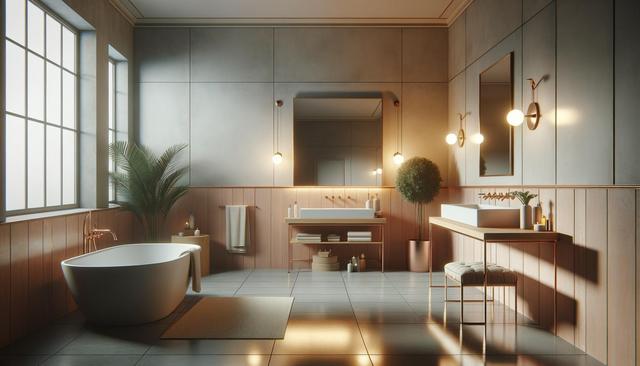Reviving Your Bathroom Tiles
Cracked tiles can be both an eyesore and a potential hazard in your bathroom. Fortunately, replacing them doesn’t always require a professional. To begin, identify the tiles that need replacement. You can use a hammer and chisel to carefully remove the damaged tiles. Ensure you have matching replacements to maintain a uniform look. Once the old tiles are out, clean the area thoroughly. Apply a layer of thin-set mortar, press the new tiles into place, and allow them to set. After the mortar dries, use grout to fill the spaces between the tiles. This restoration will not only enhance the aesthetic appeal but also improve the safety and hygiene of your bathroom.
Tackling Stubborn Mold
Mold can be a persistent problem in bathrooms due to the humid environment. To address this issue effectively, start by scrubbing the affected areas with a mixture of water and vinegar or baking soda. These natural solutions are effective in eliminating mold without introducing harsh chemicals into your living space. For more severe cases, consider using a specialized mold remover. It’s crucial to improve ventilation to prevent mold regrowth. You can do this by installing an exhaust fan or ensuring windows are opened regularly to allow air circulation. Regular cleaning and maintenance will also keep mold at bay, ensuring your bathroom remains a healthy environment.
Modernizing Outdated Fixtures
Upgrading your bathroom fixtures can dramatically transform the space, making it more functional and visually appealing. Start with the faucets, which are relatively easy to replace. Look for models that match your bathroom’s style, whether it’s modern or traditional. When installing new fixtures, remember to turn off the water supply before removing the old ones. Follow the manufacturer’s instructions carefully for installation to avoid leaks. Other fixtures to consider updating include showerheads and towel racks. These small changes can give your bathroom a refreshed look without the need for extensive renovations.
Refreshing Grout Lines
Over time, grout can become discolored and cracked, detracting from the overall look of your bathroom. Refreshing grout lines can breathe new life into your tiles. Start by cleaning the existing grout with a mixture of water and bleach to remove any surface stains. Next, apply a grout pen to recolor and reseal the lines. If the grout is severely damaged, consider removing it entirely with a grout saw and applying new grout. This process not only revitalizes the tile appearance but also strengthens the tiles’ adherence, preventing future issues.
Enhancing Bathroom Functionality
To make your bathroom more functional, consider adding storage solutions that maximize space. Wall-mounted shelves and over-the-toilet storage units can help keep toiletries organized and accessible, reducing clutter. Additionally, installing an adjustable shower caddy can provide convenient storage for bath products. Incorporating these elements will not only improve your bathroom’s usability but also contribute to a sleeker, more organized appearance.
Conclusion
Reviving your bathroom doesn’t have to be a daunting task. By tackling cracked tiles, mold, and outdated fixtures with these expert DIY solutions, you can transform your space effectively and affordably. Whether you’re refreshing grout lines or upgrading fixtures, these improvements can greatly enhance both the functionality and style of your bathroom. With a bit of effort and creativity, you can achieve a remarkable transformation without the need for professional intervention.
